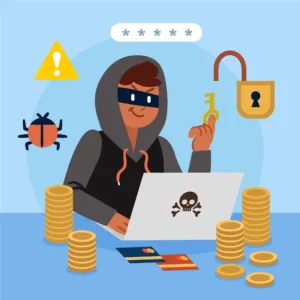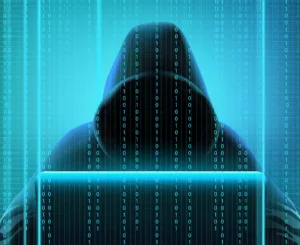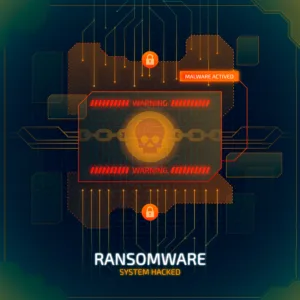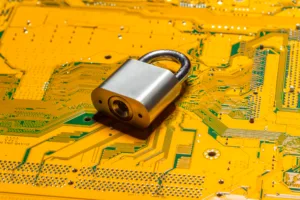
In this comprehensive guide, we’ll delve into practical strategies and tips on how to safeguard against deepfakes.
Understanding the Enemy: What Are Deepfakes?
In an era dominated by technological advancements, the rise of deepfake technology poses a significant threat to the authenticity of digital content. Deepfakes, or AI-generated hyper-realistic manipulations of audio and video, can deceive even the keenest eyes and ears. As this sophisticated technology becomes more accessible, it’s crucial to equip ourselves with the knowledge and tools necessary to protect against the threat of deepfakes.
Before we delve into protective measures, it’s essential to understand the nature of the adversary we’re facing. Deepfakes employ artificial intelligence to manipulate or create content that appears genuine but is, in fact, entirely fabricated. This can range from convincingly altering facial expressions in videos to imitating voices with uncanny accuracy.
Practical strategies and tips to safeguard against deepfakes
1. The Power of Awareness: Educating Yourself and Others
Knowledge is the first line of defense against deepfakes. Stay informed about the latest developments in deepfake technology, understand how it works, and be aware of the potential risks. By educating yourself, you not only become a more vigilant consumer of media but also an advocate for spreading awareness.
Take the time to educate your friends, family, and colleagues about the existence and dangers of deepfakes. Encourage them to question the authenticity of content, especially if it seems too sensational or unusual. Awareness is a collective effort, and the more people know about deepfakes, the better we can collectively combat their impact.
2. Verifying Sources: Double-Checking for Authenticity
In a world where information travels at the speed of light, verifying the authenticity of sources becomes paramount. Before sharing or believing in a piece of content, especially one that seems sensational or controversial, double-check its legitimacy. Cross-reference information from multiple reliable sources to ensure accuracy and reduce the risk of falling victim to deepfake manipulation.
3. Using Watermarks or Digital Signatures: Adding a Layer of Protection
Digital watermarks and signatures can act as an additional layer of protection against deepfakes. By embedding unique markers in videos and images, creators can make it more challenging for malicious actors to manipulate content undetected. Watermarks can serve as a visible deterrent and a traceable signature of authenticity.
4. Implementing Two-Factor Authentication (2FA): Securing Access Points
While deepfakes primarily target visual and auditory senses, securing access points to your digital life is equally crucial. Enable two-factor authentication (2FA) on your social media accounts, email, and other online platforms. This adds an extra layer of security, requiring a secondary verification step beyond a password. By doing so, you make it more difficult for unauthorized individuals to gain control over your accounts and manipulate content.
5. Being Skeptical of Unusual Requests: Verifying Identities
In both personal and professional settings, be cautious when faced with unusual requests, especially those involving sensitive information or financial transactions. Verify the identity of the person making the request through additional communication channels, such as a phone call or a face-to-face meeting. Deepfake technology may be used to impersonate trusted individuals, so exercising skepticism is a key component of protection.
6. Staying Informed About Deepfake Detection Tools: Tech as an Ally
As the arms race between deepfake creators and technology developers continues, it’s essential to stay informed about the latest deepfake detection tools. Various software and applications leverage advanced algorithms and artificial intelligence to analyze media content for potential manipulation. Incorporate these tools into your digital toolkit to enhance your ability to identify and counteract deepfake threats.
7. Reporting and Flagging: A Community Effort
If you come across suspected deepfake content, don’t hesitate to report it to the platform hosting the material and flag it for review. Many online platforms have mechanisms in place to address misinformation and deceptive content, but they rely on users to act as the first line of defense. By reporting and flagging, you contribute to a collective effort to maintain the integrity of digital spaces.
8. Promoting Transparency: Supporting Open-Source Projects
Support initiatives that promote transparency in media creation. Open-source projects aim to develop tools and technologies for authenticating content, making them accessible to a broader audience. By contributing to or supporting these projects, you actively participate in the fight against deepfake threats.
9. Developing Policies and Guidelines: Organizational Preparedness
Within organizations, establishing clear policies and guidelines to address the risks associated with deepfakes is crucial. Train employees to recognize and report potential threats, fostering a culture of awareness and responsibility. By incorporating deepfake defense strategies into organizational protocols, businesses can better protect themselves against the potential consequences of manipulated media.
10. Investing in Deep Fake Detection Technology: Future-Proofing Defenses
Investigate and invest in advanced technology designed specifically to detect deepfakes. Machine learning algorithms and AI-driven solutions are continually evolving to counteract deepfake threats. By staying ahead of the curve and adopting cutting-edge solutions, you can future-proof your defenses against the evolving landscape of digital deception.
11. Legislation and Regulation: Advocating for Change
Advocate for legislation and regulations that address the misuse of deepfake technology. Governments and technology companies must collaborate to establish guidelines and penalties for malicious use. By actively participating in the advocacy for responsible use and regulation, you contribute to a safer digital environment for everyone.
12. Securing Communication Channels: Encryption as a Shield
Utilize secure communication channels, especially when dealing with sensitive information. Encrypted messaging apps and secure email services can add an extra layer of protection, making it more challenging for unauthorized access and manipulation.
Conclusion
In conclusion, safeguard against deepfakes is a multifaceted endeavor that requires a combination of awareness, education, technology, and proactive measures. By staying informed, verifying sources, using technological tools, and advocating for responsible practices, individuals and organizations can collectively build a stronger defense against the potential harm caused by deepfake technology.
In this ongoing battle between authenticity and deception, our collective efforts are crucial to maintaining the trustworthiness of the digital world we inhabit.
Read more on https://cybertechworld.co.in for insightful cybersecurity related content.




















Thanks for sharing. I read many of your blog posts, cool, your blog is very good.
Your point of view caught my eye and was very interesting. Thanks. I have a question for you.